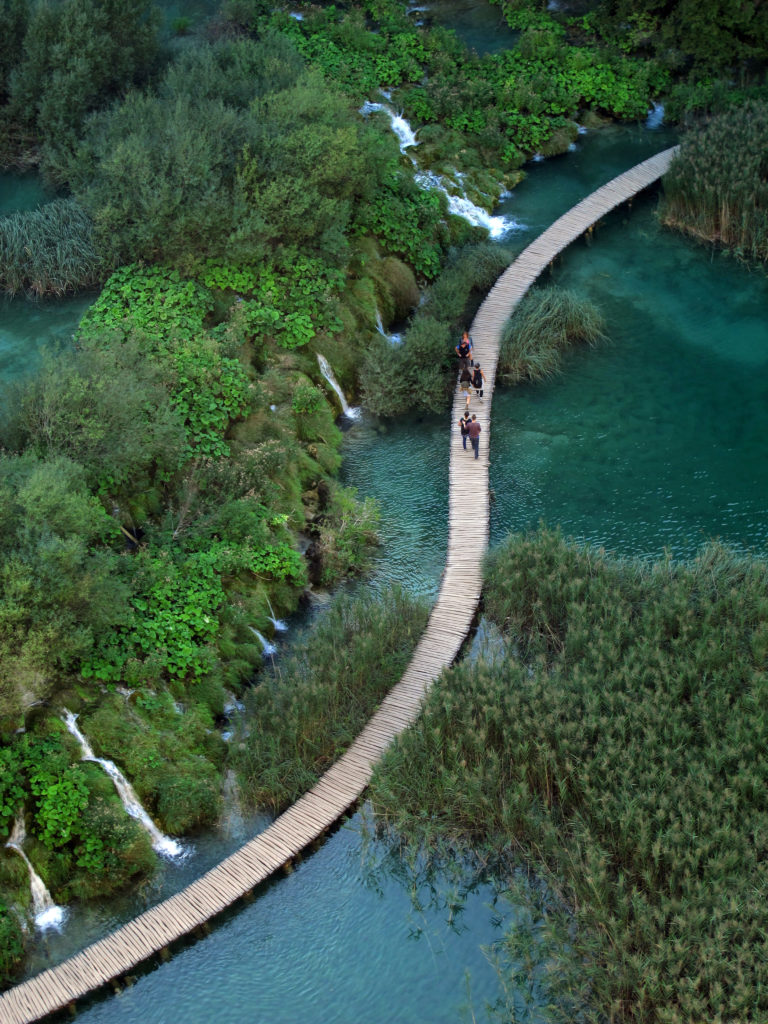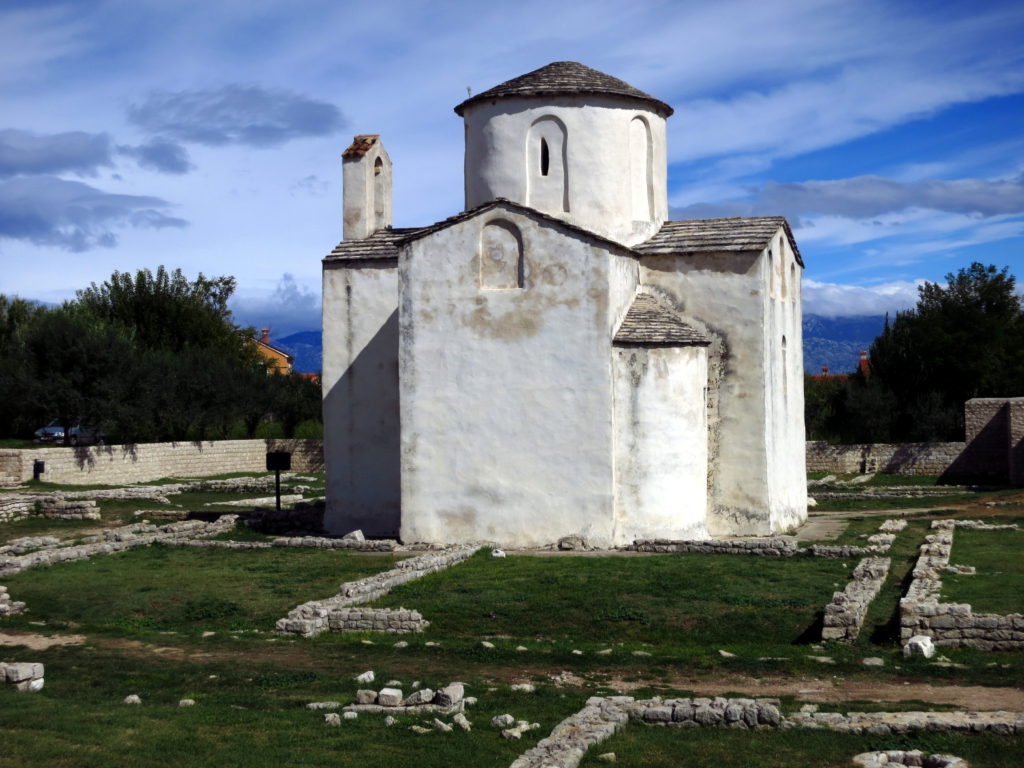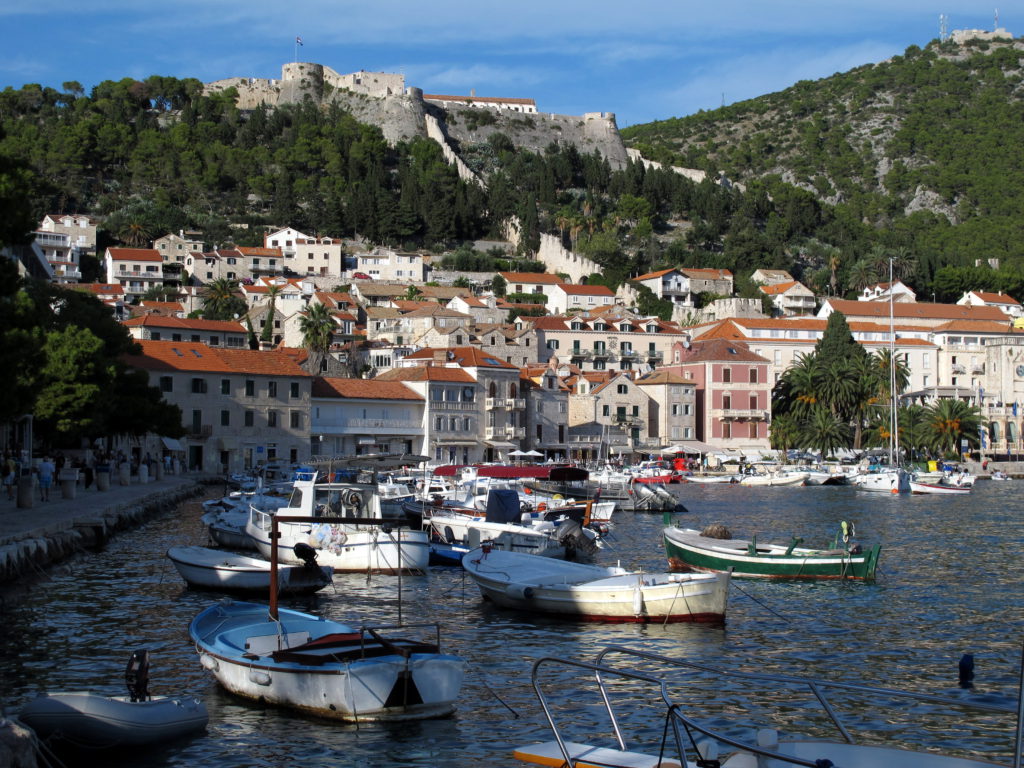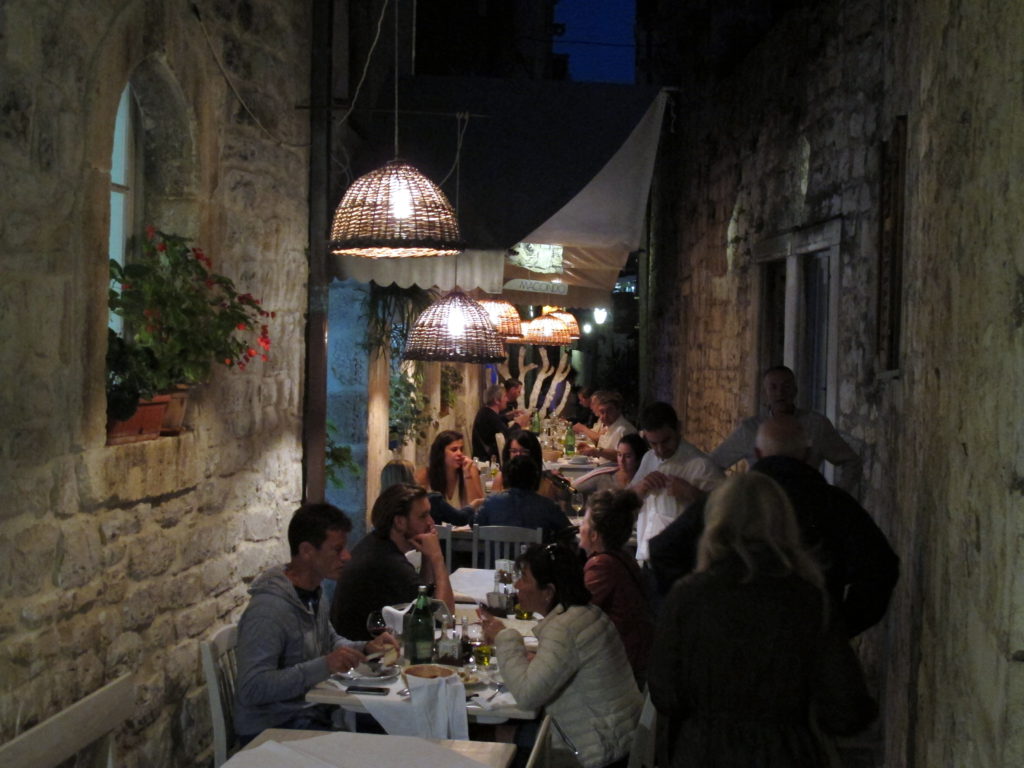This Eastern European country is an idyllic island-hopping destination, but there is more to exploring Croatia than its white pebble beaches and azure waters.
YOU’LL ALSO LOVE: Destination: Mediterranean magic in Malta
Plitvice Lakes National Park
Croatia lures sun-loving tourists with glossy brochures of beaches, yachts and islands, but there is so much more to discover about this popular destination. Although there’s evidence of the Croatian War of Independence (1991–1995), the country has made a remarkable recovery and its natural beauty remains unchanged.

Boardwalk over Plitvice Lakes
Plitvice Lakes National Park, for example, lies in a mountainous karst region of central Croatia and is an easy hop from the capital, Zagreb. At the heart of this UNESCO World Heritage site is a finely balanced natural phenomenon. As limestone erodes, it forms calcium deposits that, together with algae and moss, create ridges, natural dams, lakes and waterfalls, which continually morph over time. Rustic walkways snake for kilometres through forests, behind waterfalls and alongside lakes.
READ MORE: Destination: Skiathos
The Dalmatian coast
From the lakes, head to the Adriatic Sea to explore the Dalmatian Coast. The Old Town of Zadar, enclosed by medieval city walls, is set on a promontory jutting into the sea. Marble steps on the quay lead down to the water and hidden underneath are organ pipes. As the waves ebb and flow, the ‘Sea Organ’, authored by artist Nikola Bašić, produces a fluid and haunting tune. You can sit on the steps and listen to the sea singing while the sun sets.

The Old Town of Zadar
Another collaboration between this artist and nature, ‘Sun Salutation’ is also worth seeing. A 22m-wide circle of solar panels is set into the paving on the peninsula’s western point. During the day it mimics a pool by reflecting the sky, but as night falls the panels come alive with a pulsing, psychedelic display of coloured lights – a natural disco so to speak – and you can join children chasing the light patterns and Millennials taking selfies.

The ‘Sun Salutation’ in Zadar comes alive after dark
In the old town of Zadar, you’ll find similar contrast: medieval churches rub shoulders with Mango and Michael Kors; polished marble streets glisten while Roman ruins lie scattered amongst pizza restaurants and ice cream sellers; and ancient bells that chime on the hour mingle with the electric guitar of a skilled busker playing Pink Floyd’s ‘Shine on you crazy diamond’.
READ MORE: Destination: Berlin
Island-hopping
If you drive to the nearby islands of Pag, Nin and Vir, all connected to the mainland by causeways or bridges, you’ll discover each one is quite different. Pag is a lunar landscape, rocky with little vegetation. Sheep and grizzled people live on this windswept island and it’s is famous for its cheese. On Nin island is the world’s smallest cathedral, the Church of the Holy Cross, its austere white walls set off by purple lavender. On Vir, with its olive and fig trees, you’ll find the classic turquoise waters, which draw so many tourists to Croatia.

The world’s smallest cathedral on Nin Island.
The great walls
Head further south and the land is fertile. Roadside stalls burst with figs, apples, kiwi fruit, prunes and grapes. A good idea is to overnight at the historic town of Ston where you can feast on oysters and mussels, farmed here since Roman times. During the day, visit the ancient stones of Ston’s other claim to fame – its Great Wall. Snaking over a hill, it connects Ston to its sister town, Mali Ston, 5km away. It’s the longest complete fortress system in Europe and the second longest in the world.
YOU’LL LOVE: Destination: China
Another day, another great wall: this time the more renowned one of Dubrovnik. These walls and their magnificent forts have surrounded this ancient town since the 7th century and in some places are up to 6m thick. No wonder they were never breached. As you circumnavigate the 2km-long ramparts, look down at the patchwork of medieval buildings and streets of the Old Town of Dubrovnik, with its Franciscan monastery courtyards, Gothic-Renaissance cathedrals and washing hung outside the windows of apartments adjoining the wall. The history of the city is told from this vantage point with its most recent story narrated by the clay roofs. Clean red patches of new tiles are dotted amongst the mottled blues and green of the old. These are scars from the 1992 siege when Dubrovnik suffered enormous damage, its massive walls offering little protection from modern-day warfare and shelling from above.

Hvar harbour
Once you’re on nearby – and more glamorous – Hvar island, take time to relax in the Mediterranean sun and jump off the rocks into the Adriatic. Feast on freshly caught fish and watch the yachts coming into the harbour, their bronzed passengers savouring a perfect island-hopping holiday.
TRAVEL TIPS
NICE TO KNOW: Although distances aren’t considerable, the coastal roads are winding and speed limits are low so plan accordingly.
MUST-SEE SIGHT: The Museum of Broken Relationships in Zagreb has a quirky collection of relationship memorabilia that will make you laugh out loud and bring tears to your eyes.
VALUE FOR MONEY: Picnics on the beach. Fresh fruit and vegetables, local cheeses and delicious smoked meats are available from the many fresh produce markets and road-side stalls.

Alfresco dining between ancient walls.
PLANNING YOUR TRIP
GETTING THERE: Major airlines fly from OR Tambo to Zagreb, Split and Dubrovnik.
VISAS: South Africans need a Croatian visa or a multiple entry Schengen visa. Visit schengenvisainfo.com
WHERE TO STAY: Self-catering options offer the best value and there are plenty to choose from. You can also rent a sailing boat (with or without a crew) and experience Croatia from the sea. Rentals are generally weekly.
GETTING AROUND: Although sailing from island to island is touted as the thing to do, hiring a car is inexpensive and most islands are serviced by car ferries.
WHEN TO GO: From mid-September to October and mid-May to June, places are less crowded, prices are cheaper and the weather is fabulous.
WEBSITE: Visit croatia.hr for more information.


